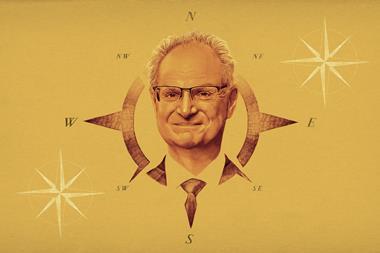Drug discovery: a history
Drug discovery: a history
Walter Sneader
Chichester, UK: John Wiley | 2005 | 472pp | ?34.95 | ISBN 0471899801
Reviewed by Stephen Neidle
Walter Sneader’s revised and updated edition of this comprehensive book on the history of drug discovery deserves to be high on every chemist’s wish list. Its coverage is encyclopedic, ranging from pre-history to some of the most recent 21st century anti-cancer drugs. Sneader provides us with an authoritative, yet extremely readable account of this highly multidisciplinary subject, in which chemistry has traditionally played a dominant role. This is evident in the extensive documentation of chemical structures that accompanies the text at every point, which makes the book very chemistry-friendly. For each drug a succinct yet adequate biological background is given, so that each drug discovery ’story’ is complete in itself, together with a few key references.
The book is organised in three parts, ’Legacy of the past’, covers pre-history, Greco-Roman, Arab and medieval medicine, through to Ehrlich and the early 20th century. The chapter on chemical medicines spans arsenic to zinc and includes, for example, the more recent history and use of gold compounds in arthritis therapy and platinum compounds in anti-cancer drugs.
The boundaries between distant past and present are frequently blurred, to good effect. Thus the section on arsenic-containing drugs rightly focuses on the work of Ehrlich, but also manages to include fascinating material on the recent use of arsenic trioxide in the treatment of leukaemia.
The largest section of the book is devoted to drugs from natural sources, including plant-derived compounds, hormonal therapy and antibiotics. The author, who is never afraid to put forward his own views, has a rather negative opinion of the future for drugs derived from plant sources. Even so, he provides very adequate coverage, with chapters on alkaloids and non-alkaloid plant products being chemistry, rather than disease, focused. The latter would have been preferable. If one wishes to read about anti-cancer drugs, for example, relevant sections are scattered throughout the book and one has to rely on the (not always adequate) index.
The final section in the book concentrates on synthetic drugs, emphasising those discovered by screening and serendipity. As in earlier sections, the coverage is comprehensive, yet again one has to work hard moving between sections if an overview of drug discovery in a particular disease category is required.
This is a work of real scholarship, that provides a superb account of drug discovery. The golden age of chemistry-based drugs has now passed and we are into the era of biology-driven drug discovery. It remains to be seen whether the past successes highlighted in this book will be repeated in the future and whether chemistry will move once again to centre-stage.












No comments yet